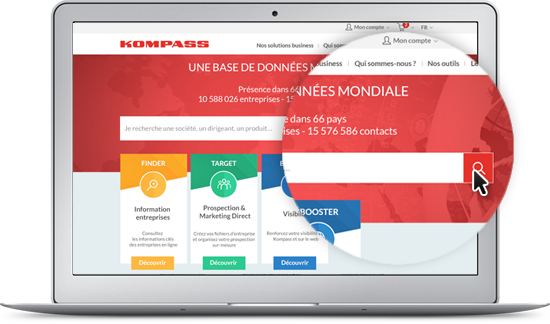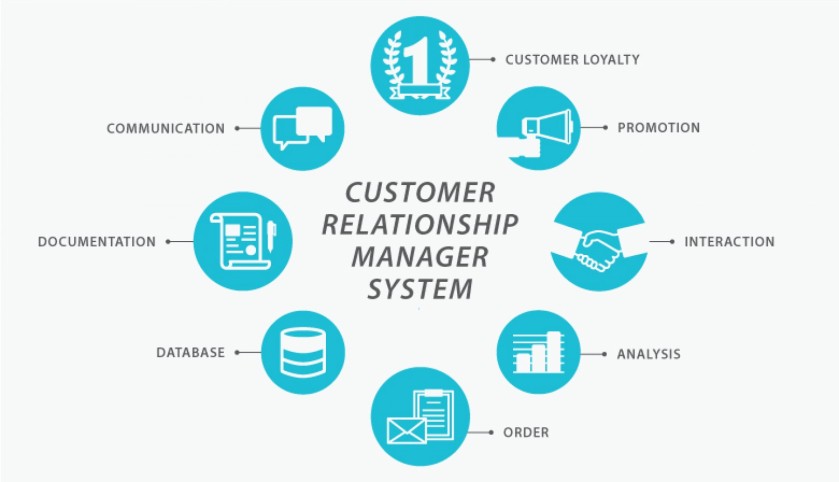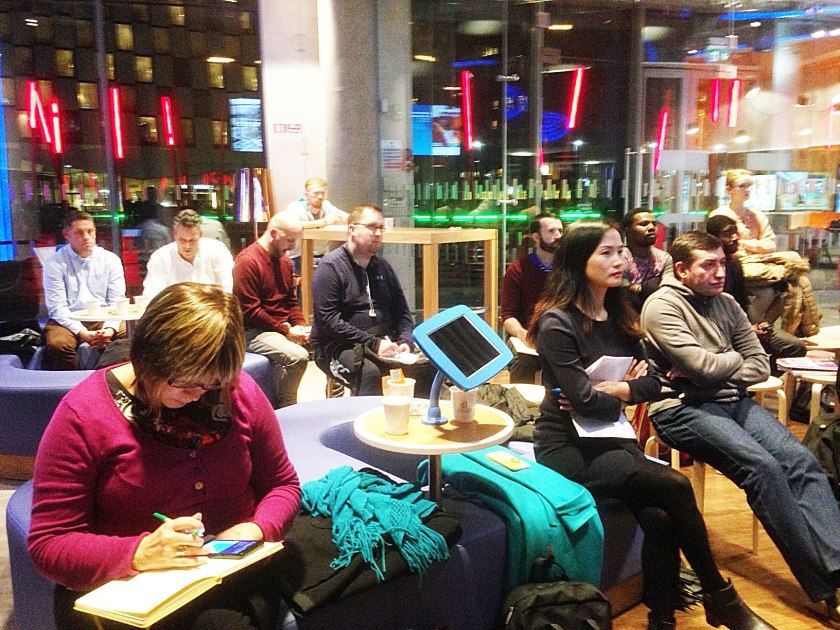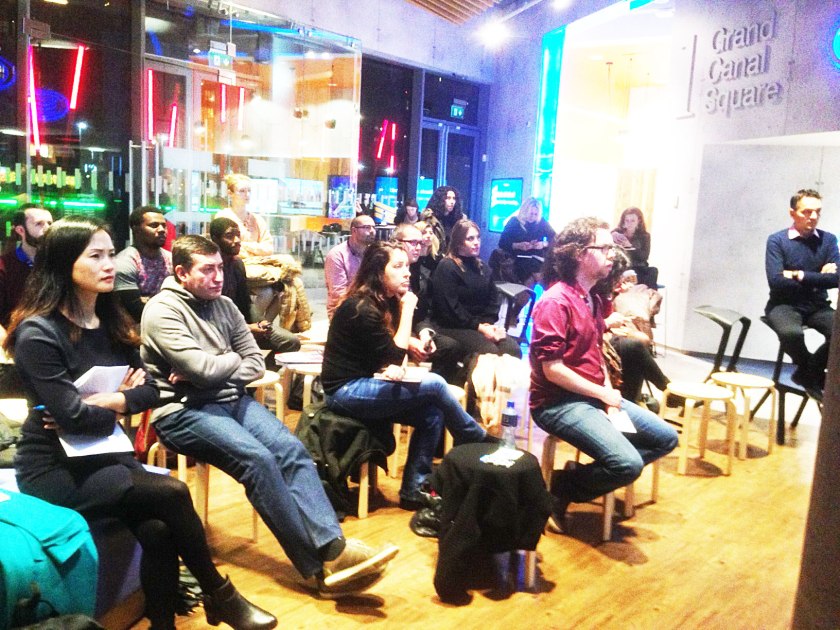Ludovic SALENNE, Digital Marketer, Blogger and Sébastien VITU, Salesman, Consultant Inbound marketer offer you this aperitif webinar, in which they are answering participants‘ questions about digital market research.
The original digital market research (prospection digitale) webinar is in the French language only and can be viewed as a replay at this link.
Please note I have not dissociated the answers from Ludovic or from Sébastien in the replies. You will simply get both of their answers to each question.
So, now let’s get started with the Digital Market Research Q & A.
-
How to do digital market research without being too intrusive during the coronavirus crisis?
I hope as a salesperson, you haven’t stopped doing your offline and digital market research, because two months without turnover starts to be too long. Besides, if you still hesitated to do it after the deconfinement, you would have put your company financial health at risk. So, yes, you do need to carry on doing your market research.
The challenge is to stop talking about ‘You and your product(s)/service(s)’ and this is the real topic. This is the central theme we will be talking about tonight. Do not get into your sales pitch! These messages are currently inaudible to your potential customers because the situation is different. They have other things to think about than pouring money down the drain. Your potential customers think first about saving money rather than spending it.
Remember that regardless of the situation, the prospective customers base their decision in the grip of emotion. They then try to rationalise it, validate it to be sure they make the right choice.
Consequently, you must bring up with your prospective customer their context, their problems, their daily issues related to the economic recession. In other terms, you need to get them to admit to their negative emotions they feel in this situation. The goal for you is to have enough elements to bring value to them and incite them to visualise their positive emotions they could sense, instead of the negative ones, if they were working with you. Understand their objectives and position yourself with unbiased and benevolent solutions (Quite obviously, too much benevolence isn’t helpful to your business)…. This allows them to think and bring them progressively towards the positive emotions they would have if they trusted you.
It is necessary to adapt the message. We surely represent companies but we are also human beings talking to other human beings. We need to be present in both good and bad times for them. Remember, people buy things because they are afraid to lose money or afraid of not making enough money. If they buy things from you, it’s because it’s to do things that will interest them in.
For the older crowd out there, let me give you an example. When you talk to potential customers, you present them the flower from the Mario Bros (Nintendo Ness video game), it’s great. But if you talk to them about Maria throwing fireballs, you will interest them in. Let me explain what I mean. Mario, when he is very small and vulnerable, he feels anxious, which is a negative emotion. At that point, you could help him visualise the self-esteem boost he would get by eating this flower and throwing fireballs to get him to grow up, double his size.
-
Would communicating in one’s own name instead of the company’s name be more relevant and human in these circumstances?
This is what we call ‘Personal Branding‘ or ‘Employee Advocacy’ is the real solution but not only in the case of COVID 19.
In fact, if you are into B to B (Business to Business), your potential customers don’t look for a brand or a solution, they look for a person they can trust, who demonstrates he/she is the right person to help them reach their goals. In both B to B and B to C (Business to Customers), the relationship is very much human beings to human beings.
To come back to the Coronavirus, Harvard Business Review analysed the 3 last recession periods, in order to highlight companies‘ financial health trends and to detail companies‘ behaviours in recession times. Their post helps you understand what is the position with your clients and the different company profiles there are going to be.
They will be defensive companies like the likes of Airbnb, which will reduce costs and budgets by laying off a quarter of its staff. In recession cases, other companies will, contrarily, invest a lot more into finding new opportunities and generating turnover and covering their sales team.
The challenge for your company is to mix defense and attack and find the right balance to adapt to the different events you will encounter during this COVID 19 crisis.
-
This question is a little ironic but does make sense too. Is beer a good vehicle to sell?
We are offering this aperitif webinar format based on the aperitif online meetups you may find in your cities. The aim is to forget a bit of our context and offer more closeness, to show authenticity like in real life. This moment will be used to create affinities with you and potentially initiate deeper relationships with you. Obviously, there will be an impact, maybe you will continue to come to us to meet up more often on the web, maybe you will share more our articles or contact us to work with us. So, to conclude, does authenticity sell? The answer is, yes it does.
-
How to be visible and striking on Linkedin? How to grab the attention of potential customers and get them to contact us?
Connecting with people on Linkedin is very easy. But after the first connection, ie getting in touch with, creating links, and convincing them to go further than a Linkedin connection, it’s much more difficult.
To chase contacts on Linkedin to widen one’s own network, sure it’s good, but it’s a vanity metric to boost ones’ own ego. Concretely, if you stop there, there will be no impact on your turnover. To resolve this, the challenge is to avoid copying and pasting standard messages on social media networks. Beyond this, the vast majority of people you contacted on the spot (75%) in your market research, are not ready to buy. They are not ready to listen to you talking about your products, yourself, and even less so in the current situation.
To go back to previous examples, market research off and online are the same. If you send a sales message straight off connecting with someone, you are sending a ‘purchase decision’ message to a person that is already very mature/advanced in the buying process. But to be fair, it’s probably only the quarter of your target market, which is at this purchasing stage. In 75% of cases, you will either get no answer or negative answers. You will generate frustration on the part of your new contact.
Instead, bring value by sharing content bringing up solutions, or answers to questions potential customers are asking themselves. Do not forget that Linkedin is a social network and is not your CRM. You can connect with people in your second and third-degree contacts to go further than your first contacts’ network.
If you go in the real-life and shake your potential customers’ hand and say ‘Hi, my name is XYZ, I sell you digital marketing solutions’. This is very likely going to fail. Similarly, even if your product has 10 amazing characteristics, if you don’t listen to the person in front of you to figure out what is interesting them in what you do, it will be useless. Listening will make a difference.
So, personally, before contacting potential customers on Linkedin, I’m used to checking what they are doing, what kind of content they share, the questions they ask in discussion forums. Generally, once I have done that, I have content that responds to their questions in the discussion forum. Then, I contact them through private messages by saying ‘Hi XYZ, I have seen that you asked a question related to my issue, which I understand very well because it’s also the same one as my clients. So, it gave me the idea to write a post and offer you to read it. In this post, I offer you solutions that are unbiased and allow you to resolve your problem’.
When you do that, you do not push unwanted information in front of them, you bring a solution to their problem. And here, you activate a very powerful psychological, which is the ‘reciprocity principle’. Let me further explain. If you invite me for dinner, afterward I will feel obliged to return you the favour. You will then have a response and a relationship will be created. You need to give before receiving/requesting something. Besides, you show interest in your contacts and in what they do.
On social media, you can like their posts, respond to things they have written, or find information with social listening and monitoring tools, it’s very important because it proves you are showing interest in what they do and who they are. On this point, I recommend you to read the book ‘Jab jab jab hook’ from Gary Vaynerchuck.
-
How to qualify a database file on the internet ?
When you take a contact database for sales pitches, there are about 75% of them which aren’t interested in it. In the 100 emails you sent, you may get 4-5 people opening it and zero return. So, when you buy a contact database, you will need to send the right message, at the right person and at the right time. For this, you will need to know, in which context and stage in the buying funnel is the person you are contacting.
When you buy a database on Kompass, you do not have such information. In order to gain this knowledge, the best way to go about it is to set up a series of emails, which will allow you to determine if the potential customers are at the beginning, middle or end of their purchasing cycle. That way, you can send them the right messages with answers to their questions and the right content suited to their purchasing stage. According to the information you will track (clicks on links), you will know which type of content they have interest in and at which stage. If the potential customers clicked on content related to a purchasing decision, you can call them.
The challenge is to send emails with different options of content to determine according to their behaviours, at which stage they are. Do not keep unnecessary contacts, or you risk being blacklisted by the servers when contacting them. A target is a person, not a company. You must do your homework by establishing your persona. You need to understand precisely who are your ideal clients and clients’ issues…These are questions you must answer creating your persona.
-
How many reminders should we send to a potential customer?
There is no definite answer to this, but I would say around 10, depending on the customer purchasing stage and their contact preferences (social media, emails, phone). It is worth choosing and testing different tools and vary channels. Remember to bring value during the whole sales cycle. The sales cycle is the average time for a client to sign a contract.
-
Should I create a blog or a website ? Should I integrate the blog in the site or should I keep it detached?
You need both:
– A website to showcase your solutions, your company, ie a ‘showcase website’.
– A blog to publish regular content bringing value and answering to problems your potential clients are facing during their purchasing cycle.
The challenge is to be well ranked on Google to attract more visitors and ensure your visitors have to do the least clicks as possible to do, in order to be converted into a potential customer. Consequently, I highly recommend you to integrate your blog(s) into your website, keeping the same domain name. This will allow you to attract more visitors and bring them into the conversion funnel. In turns, you will be able to convert them into potential customers or LinkedIn contacts.
-
For the Search Engine Optimisation (SEO), I thought it was necessary to have different domain names to optimise BACKLINKS?
If your domain name is ranked lower than 40, the link bringing you to your website will have very low value. Having a good domain authority is complicated. It depends heavily on how many pages you have on your website. To have high ranked domains is good, however, having several low ranked domains isn’t.
-
Google is no longer a search engine but a response engine.
80% of our traffic comes from search engines. The issue is, soon Google won’t suffice. Especially since Google’s main objective is to bring users’ answers directly into the search results without needing them to click on any links. Furthermore, questions asked to vocal assistants are replied to directly without generating internet traffic. We will have to give another battle than the search engine optimisation one.
We need to think about grasping people’s attention and creating a community to gain regular, engaged, trusted traffic. The targets are to generate authenticity, bring closeness and build relationships. You can get their attention through videos, video-conferences, podcasts, webinars. Social media can be used to bring the right person in front of the salesperson. In B to B, other channels to consider are trade fairs, emails, and phone calls.
-
Which tool to use, in order to centralise our actions ? Hubspot or Sendinblue for beginners?
I do not recommend Excel, as it’s too complicated to update. The simple answer is Customer Relationship Management (CRM). If you are short with money, you can get free CRM solutions like Hubspot. Hubspot is well done with: complete contact forms, behaviour patterns’ tracking, to follow the evolution of your contacts after marketing or sales actions you completed. Hubspot will also send you notifications when emails are opened.
Sendinblue is also fine. Either or CRM solution is fine, it very much depends on your goals.
You may as well invest in low priced CRM solution around 15-20 Euros a month.
-
Is it necessary to have a Premium Linkedin account?
No, it’s not necessary. To make good use of Linkedin, you need to have a sufficiently large network of around +500 contacts, with a maximum of people in the second-degree contacts. Over the +500 contacts, you can reach more people. Under that, Linkedin will limit the access to functionalities for everyone who isn’t in your network from the 3rd degree. But, if you have second-degree contacts, they can put in contact with someone from the 3rd degree. That way, you can send private messages, connection invitations…
The second solution is to share qualified/relevant content which will increase your number of contacts. This said, investing into a tool can be worth it.
-
What are the techniques to make an attractive and efficient Email LIST BUILDING campaign ?
The point is to pretend it’s a one-to-one conversation, the same way you would do with friends, colleagues, or relatives. We have personally stopped adding images in emails because this is not the way people send personal emails. Tip to increase your opening rate very quickly: fill in what we call the ‘pre-header’, ie the email preview. I also encourage you to use the ACCR method for your email list building campaign.
The second technique is to use the ‘last attempt’ trick. For example, you send them the questions ‘Are you still interested in…? This is the last chance to avail of this offer…’. We then grant the ‘rarity/loss principle’. In other terms, customers may feel they will miss out on something if they don’t take action. This is based on psychological biases.
-
I use a lot of long-tail keywords for my site but I don’t get traffic. Why?
It is very likely that the keywords which you are ranked for aren’t the ones talking about you. Remember to think about problems and answers, rather than about your business and products. Keywords must be relevant to the problems your target market is facing, and what they are searching for on Google.












